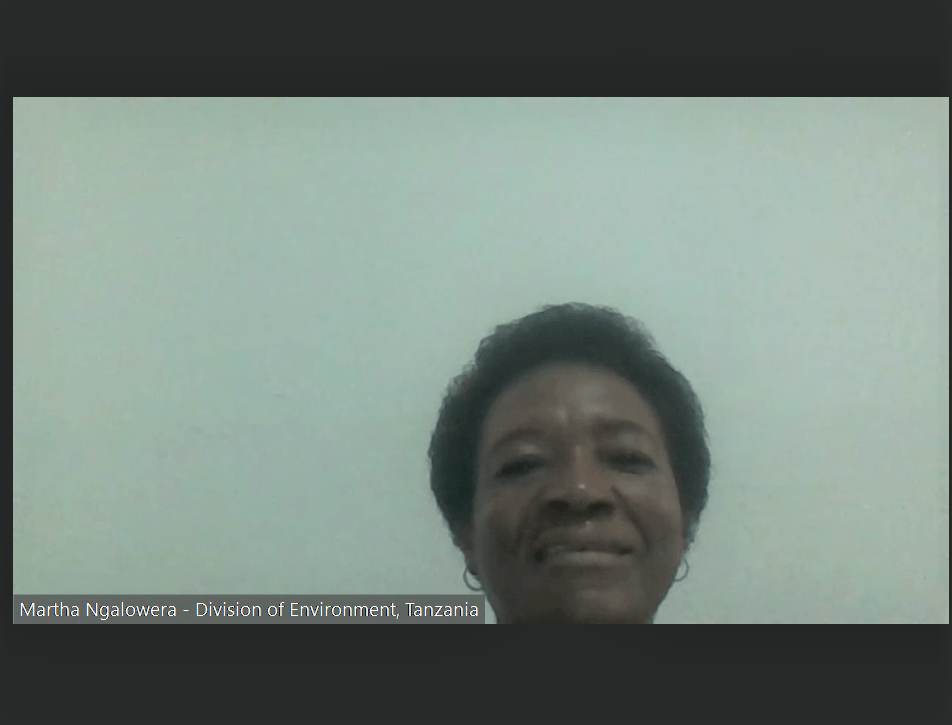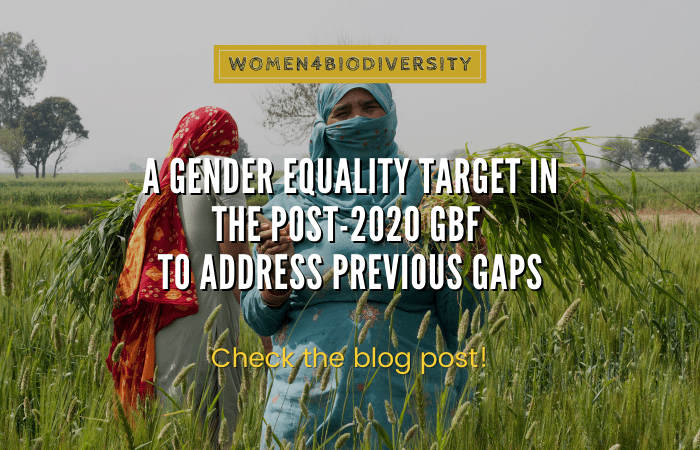By Rhea Claire E. Madarang
A stand-alone gender equality target in the post-2020 global biodiversity framework would fill the gender gaps of the previous ten-year framework for biodiversity action, said representatives from the Dominican Republic and the United Republic of Tanzania, both Parties to the Convention on Biological Diversity (CBD).
Speaking during the #WomenAreInOurSharedFuture Biodiversity Day live interviews hosted by Women4Biodiversity last May 22, Martha Ngalowera, public awareness officer in the Office of the Environment under the Vice President’s Office in Tanzania, said that the Strategic Plan for Biodiversity 2011-2020 had gender gaps.
A stand-alone gender equality target in the post-2020 global biodiversity framework, which will guide Parties to the CBD in their biodiversity planning and policies for the next 30 years, will help “women and girls be involved in decision-making in the shared resources from biodiversity,” Ngalowera pointed out.
Isabela Hernández, Head of the Division of Invasive Alien Species in the Dominican Republic’s Ministry of Environment, also had similar sentiments during the live interview.
“We failed in mainstreaming gender with Target 14 [in the Aichi Biodiversity Targets],” Hernández said. She added that the target was “very broad” and “general.” The Aichi Biodiversity Targets are the targets mapped out under the Strategic Plan for Biodiversity 2011-2020.

Hernández also pointed out that the current target which includes women in the first draft of the post-2020 global biodiversity framework, Target 21, is also “general.”
“Target 14 and Target 21 are very much alike,” she said.
A biodiversity target for women’s access, participation and decision-making
A stand-alone gender equality target in the post-2020 global biodiversity framework, on the other hand, emphasizes women’s access to natural resources, and their participation and decision-making in biodiversity planning and policy.
“We need to address gender in a specific way for us to be successful this time,” Hernández said. “With [a stand-alone] target, we are going to move forward with mainstreaming gender.”
The stand-alone gender equality target, which will be Target 22 if adopted in the post-2020 global biodiversity framework, was proposed by Costa Rica and later supported by members of the Group of Latin American and Caribbean States (GRULAC), including the Dominican Republic, as well as by Cote d’Ivoire, Togo, Benin, Cameroon, and Tanzania during the CBD meetings in Geneva last March (See proposed text in the box below).
Ngalowera said that with a stand-alone gender equality target, gender “will be in every biodiversity plan [of Parties to the CBD].”
It is worth noting that in a study of 254 National Biodiversity Strategies and Action Plans (NBSAPs) from 174 countries from 1993-2016, only 56 per cent of the NBSAPs and 61 per cent of the countries mentioned at least one keyword on gender and/or women. A significant percentage of NBSAPs have no mention at all of women or gender.
A stand-alone gender equality target would help address that. ““Saying you are going to achieve gender equality is one thing, but implementing it and reporting it is another…now it’s going to be official, obligatory [to implement it],” Hernández said. “Reporting will be mandatory…and now that it is, you have to make a full strategy for your key actors at the national level…to really achieve the target.”
She added that the Dominican Republic does have gender-focused biodiversity activities, but she saw the power of a stand-alone gender equality target, because at present “we are not obligated – we don’t have to report about [gender].”
How a stand-alone gender equality target would help women and biodiversity conservation
Ngalowera expressed hopes that with a stand-alone gender equality target, women in her country would have better access to natural resources and better participation and decision-making in biodiversity planning and policy.
“I noticed there are very few women in decision-making positions in biodiversity,” Ngalowera said. “Most local women here don’t have access to resources. They cultivate crops, but it’s their husband, father, or brother who has control. These women, though, have a lot of knowledge and experience [in biodiversity].”
“They are the main agents in helping humanity live in harmony with nature,” Ngalowera said, citing the post-2020 global biodiversity framework’s vision in 30 years. She mentioned, among other things, women’s roles in sustaining their families and communities.
Ngalowera also added that she noticed that in environment-related meetings, women were significantly lesser in number. “You may find three or four women. Six out of 20 people are already many,” she said.
Ngalowera is hopeful that women’s knowledge and experiences will be taken into consideration in biodiversity planning and policy, and women will have “equal access to the shared resources from biodiversity.”

Hernández, meanwhile, is looking forward to how the gender target will help the Dominican Republic, as a member of GRULAC and the Small Island Developing States (SIDS) address environmental issues like climate change, intense heat waves, hurricanes, and the dust blowing from the Sahara desert.
“You gain so much to have a gender perspective within your initiatives that you can imagine how different your conservation actions will go,” Hernández said, adding that women have an important role as they “take part in a different manner [with men] in conservation activities.”
She is also hopeful that women’s conservation actions, such as women working in forest conservation and restoration, will now be “represented, measured, and monitored.”
will make conservation more impactful.
Ngalowera had similar insights. “If we include women in [biodiversity] policy and strategy, [recognize their] knowledge and experiences, we would have more impact in biodiversity conservation,” she said.
Road to COP 15
Both Hernández and Ngalowera reiterated that their countries will continue to support the stand-alone gender equality target in the upcoming Fourth Open-Ended Working Group Meeting on the Post-2020 Global Biodiversity Framework in Nairobi, Kenya later this June and up to the Fifteenth Meeting of the Conference of Parties (COP 15) in Kunming, China, where the post-2020 global biodiversity framework will be adopted.
“We plan to support this to the end. There will be no shared future [for all life on earth] without a gender perspective, or gender equality,” Hernandez said, referencing Biodiversity Day’s theme for this year. “We need to have women and girls involved in our biodiversity actions.”
“We will be building a shared future,” Ngalowera added, saying Tanzania will support Target 22 until COP 15. “I have a very great hope that after the post-2020 global biodiversity framework [with a stand-alone gender equality target] is implemented, everyone will feel they share the resources from biodiversity, and more women will be involved in the policy and decision-making on a day-to-day basis.”

